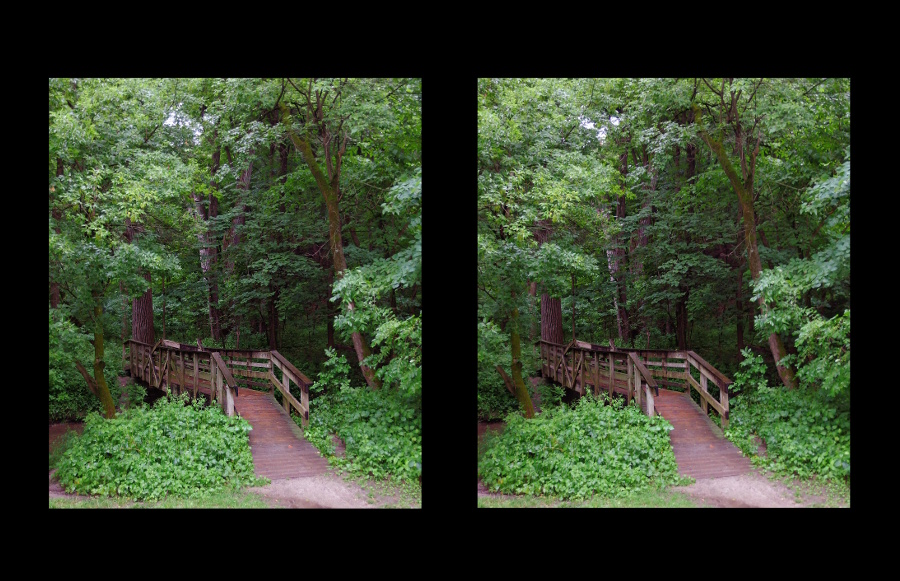Note: for best results on this method, read the steps and illustrations, but wait for the test image at the bottom of the page before trying it. The illustrations are not meant to be crossviewed.
While looking at a crossview image pair, hold your hands up next to your temples, like horse blinders, as if you were trying to eliminate distractions in your peripheral vision. You should see something like this:

Start to angle your hands together as if closing a pair of barn doors at the hinges. The hands will appear translucent – a natural result of each being visible to one eye but not the other.

Continue this until your ghostly hand images appear to just barely meet and create an irregular, solid vertical line at the partition between the two images. Since your hands aren't really touching, you can still see the images in the background.

While keeping your hands steady, relax and start blinking slowly. If you're lucky, after a few blinks the stereo image will come together, with your hands nicely framing the view.

If you don't have success after a little while, try giving the process an assist by crossing your eyes gently during the last step.
Why does this work? The first method had you learning precise conscious control of the convergence of your eyes, but now you're presenting your visual cortex with a scene that can make sense only if it finds the crossview angle on its own. In computing terms, it's a little bit like relegating a CPU task to the graphics card. The blinking serves as a sort of reset button, forcing recalculations until it gets it right.

See also:
